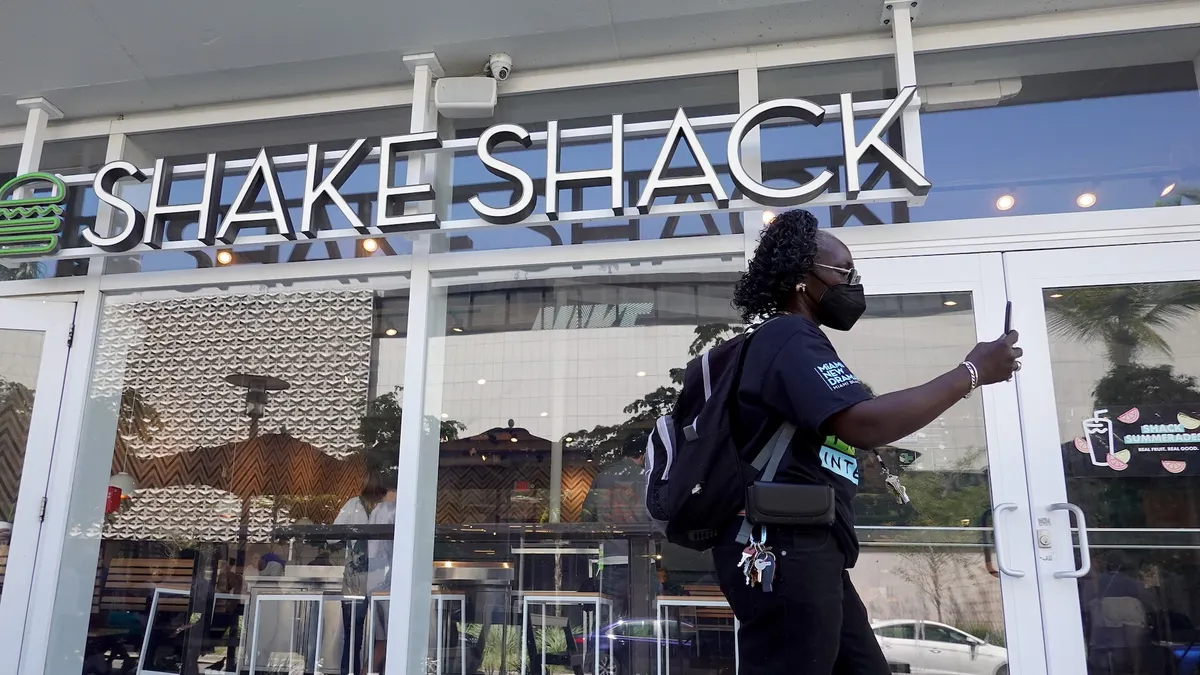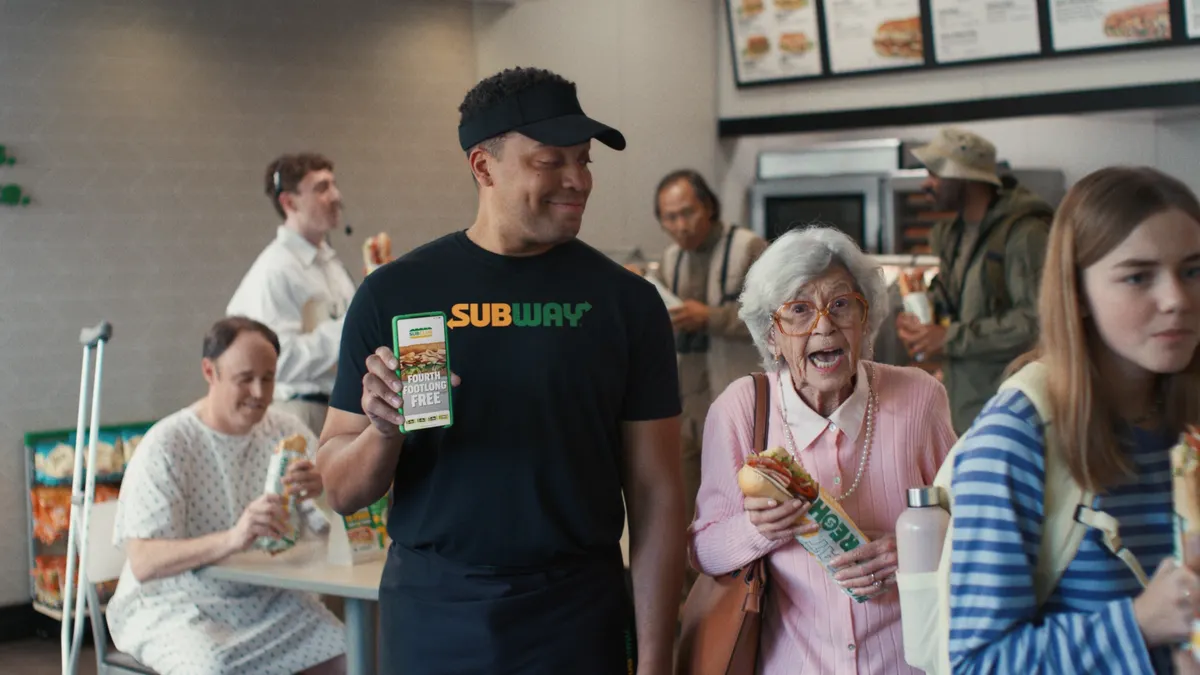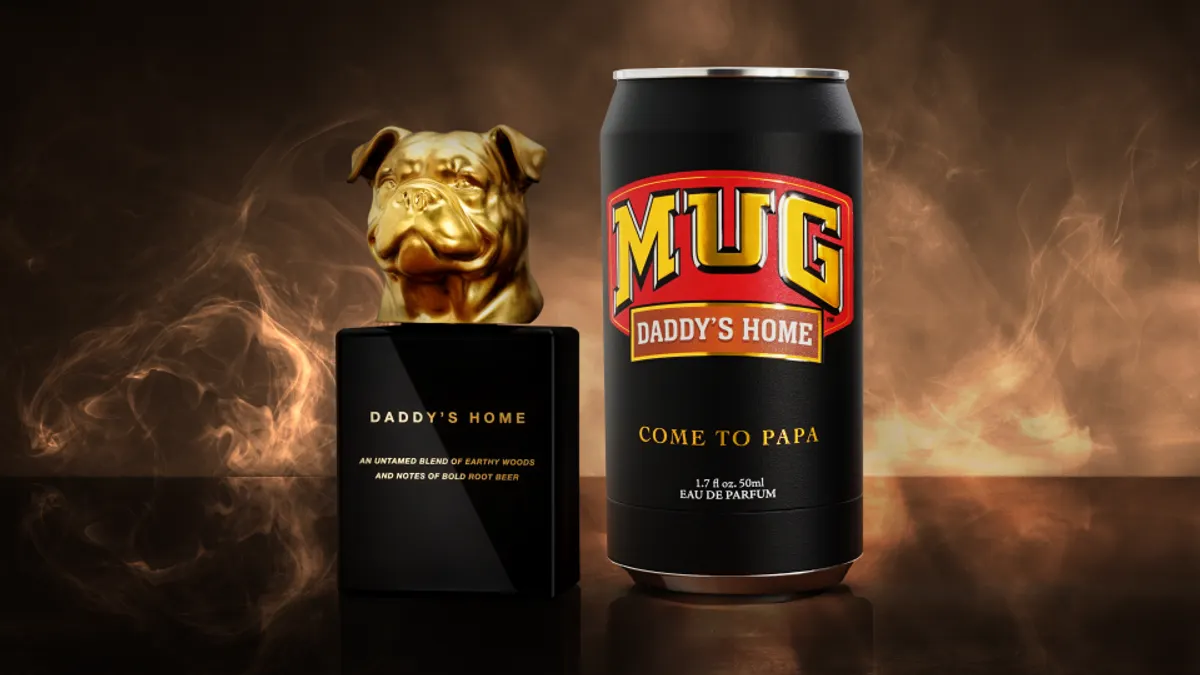Shake Shack has seen positive same-store sales growth for several quarters, but its underinvestment in advertising compared to larger fast-food and fast-casual peers prevented the burger chain from realizing its “true potential,” according to CEO Rob Lynch.
“This brand has never had top-of-funnel paid media launched at scale,” Lynch said on the company’s most recent earnings call. “It’s hard to believe, but all the marketing has always been word of mouth, earned media and bottom-funnel … promo activations, and so we leaned in on making some of these investments and so we’re ecstatic with the results.”
Helping to supercharge the paid media investment is a partnership with Google. By using the tech giant’s Web To App Connect offering, artificial intelligence-powered search optimization and Performance Max ad products, Shake Shack has driven a sixfold increase in app conversions and a 2.5x improvement in return on ad spend. The improved performance speaks to how the chain is making the most of its app and turning it into a driver of long-term growth.
“We were investing a lot more in media to drive app downloads, to drive users back into the app,” said Lisa Whittaker, Shake Shack’s senior director of digital marketing. “As we continue to invest more, how do we ensure that we’re spending money on quality traffic? How do we make sure that we're not just wasting money, that we’re dropping them into the best experience possible within our app?”
Push to the app
Shake Shack, which was officially founded in 2004 after several years as a hot dog cart in New York, launched its mobile app nationally in 2017. Such offerings have become increasingly crucial tools for restaurants due to the pandemic-accelerated shift toward digital and mobile channels and as first-party customer data becomes more valuable to marketers.
For Shake Shack, adding value and benefits to the app is an extension of its approach to on-premise hospitality. App users get access to limited-time offers four days ahead of the general public, among other features. To showcase the investment in the app experience, the chain wanted to remove the friction between mobile web traffic and app conversion.
“We’ve seen the behavior when guests download our app and open it up, that conversion behavior is pretty significant for us. We know that [when] guests are downloading our app, they’re expecting additional value benefits,” Whittaker said.
Google’s Web to App Connect tool made “perfect sense” for Shake Shack. Mobile users who already have the Shake Shack app downloaded and click on paid ads are connected to relevant app pages, such as offers and in-app challenges, giving them access to a more personalized experience.
“We have seen the additional value of when somebody is an app user versus when they just go to our website. The app provides us an additional communication touch point to really ensure that we’re driving awareness around some of the key features or offers that that we’re doing within the app,” Whittaker said.
Shake Shack has used special offers to drive both app downloads and same-store sales. In May, the chain ran a month-long promotion around National Burger Month that, coupled with a $1 soda promotion, helped drive a 20% app install increase. Similarly, Shake Shack has seen a 16% month-over-month increase in monthly active users when executing such offers through the app, Whittaker said.
“All the really important life cycle marketing metrics we look at, all the data, has been extremely positive,” she said.
Moving forward
Shake Shack says its efforts to turn web users into app users has been boosted not just by Google’s Web To App Connect tool but also by the tech giant’s AI-powered search optimization and Performance Max ad products. While the chain has seen positive results from its experiments, other marketers have expressed concern with the black box nature of these tools.
“It’s a journey to get comfortable with the ‘uncomfortableness’ and have some of that loss of control and less visibility. As digital marketers, we’re going to have to figure it out,” Whittaker said. “Everybody is scrambling right now because the technology is moving so fast.”
For Whittaker, that discomfort is eased by a good relationship with Google’s ad team, which she feels is invested in their business, as well as the ability to leverage a lot of data quickly thanks to AI. That said, using the tools is a constant learning process.
“The results in the data don’t lie, so if there’s something funky going on with AI, it’s going to show up at some point,” she said.
The use of these tools comes as Shake Shack executives have made a commitment to ramping up ad spend, especially from an upper-funnel perspective. Digital ad spend allows the chain to better service a store footprint that extends beyond high-traffic areas like New York and Los Angeles into 51 other markets around the U.S. Early investment is already yielding gains.
“We’re getting a lot of different halo benefits from the media itself, outside of driving traffic and sales, which is the number one goal,” Whittaker said. “I’m so excited for all the learnings that we’re getting, because this is really going to inform our model going into 2026.”






















